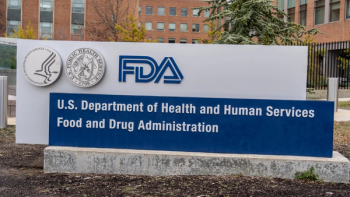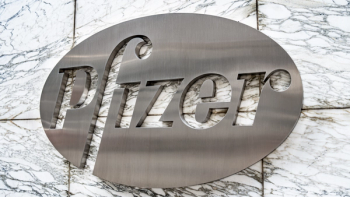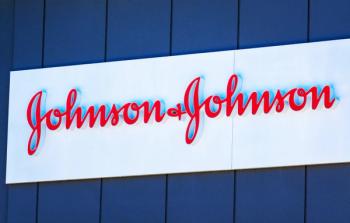Key Takeaways
- Breakthrough Trispecific Antibody Shows Strong Early Efficacy: JNJ-5322 demonstrated an 86.1% overall response rate (ORR) at the recommended Phase II dose in heavily pretreated multiple myeloma patients, including a 100% ORR in patients naïve to B-cell maturation antigen (BCMA) and GPRC5D therapies.
- Novel Mechanism Targets Tumor Heterogeneity and Resistance: Johnson & Johnson’s JNJ-5322, the first trispecific antibody targeting BCMA, GPRC5D, and CD3, was designed to overcome the resistance and tumor diversity seen in relapsed/refractory multiple myeloma.
- Manageable Safety Profile in Early Clinical Trials: Despite frequent low-grade cytokine release syndrome and taste-related adverse events, JNJ-5322 showed no grade ≥3 CRS events, supporting continued development in Phase II/III studies.
Early Phase I trial results show that Johnson & Johnson’s (J&J) JNJ-79635322 (JNJ-5322), a first-in-class trispecific antibody, demonstrated a high overall response rate (ORR) in patients with relapsed or refractory multiple myeloma. Results were first presented at the 2025 American Society of Clinical Oncology Annual Meeting and will also be presented at the 2025 European Hematology Association Congress.1
Could Johnson & Johnson’s Trispecific Antibody Redefine Treatment for Relapsed or Refractory Multiple Myeloma?
“The response rate with JNJ-5322 is encouraging as we explore the potential of this trispecific antibody for the treatment of relapsed or refractory multiple myeloma patients,” said Niels van de Donk, MD, PhD, VU University Medical Center, Amsterdam, Netherlands, in a press release. “In addition to its monthly dosing and promising efficacy, the results indicate a promising safety profile and that further study of JNJ-5322 is warranted.”
Study Design and Endpoints
- The first-in-human, dose escalation study evaluated JNJ-5322 in 126 patients with heavily pretreated relapsed or refractory multiple myeloma, with a median follow-up of 8.2 months.
- This included the recommended Phase II dose (RP2D) of 100 mg every four weeks, administered after a step-up dose.1
- The primary endpoints of part 1 of the study were the number of participants with dose-limiting toxicities and with adverse events (AEs) by severity.
- Secondary endpoints include, but are not limited to, the number of participants with anti-drug antibodies, time to response as defined by International Myeloma Working Group (IMWG) criteria, duration of response per IMWG, and preliminary anti-tumor activity.2
Efficacy Findings
- Results show that patients treated with JNJ-5322 demonstrated an ORR of 86.1% in patients treated at the RP2D.
- Additionally, the treatment demonstrated a 100% ORR in a subset of 27 patients who had not previously received B-cell maturation antigen or GPRC5D-directed therapies.
Safety and Adverse Events
- Fifty-nine percent of patients experienced cytokine release syndrome, making it the most common AE.
- No AEs were reported to be grade 3 or higher. Additionally, 28% of patients experienced grade 3 or higher infections.
- Four treatment-emergent deaths were reported, including one due to adenoviral encephalitis attributed to the therapy.
- Around 58% of patients reported taste-related AEs, most of which were grade 1.
- Other GPRC5D-related oral AEs included dry mouth, which was reported in 17% of patients, and dysphagia, which was reported in less than 4% of patients.
- Notably, grade 1/2 weight loss occurred in 6% of the RP2D group and 12% across all doses.1
Multiple Myeloma Landscape
According to the American Cancer Society, the average lifetime risk of developing multiple myeloma (MM) in the United States is less than 1%. MM is most common in older adults, with a median age at diagnosis of 69 years. Fewer than 1% of cases are diagnosed in individuals under the age of 35 years. By the end of 2025, an estimated 36,110 new cases and 12,030 deaths from MM are expected.3
“These promising data are a major step forward as Johnson & Johnson works to transform outcomes in oncology with next-generation immunotherapies, building on our leading portfolio of complementary and combinable therapies., said Jordan Schecter, MD, VP, research & development, multiple myeloma, Johnson & Johnson Innovative Medicine, in the press release. We look forward to seeing the results of planned Phase II and Phase III studies. We hope to redefine what’s possible in terms of efficacy and safety, creating another strong treatment option clinicians can choose based on the needs of their patients with relapsed or refractory multiple myeloma.”
References
1. Early results from Johnson & Johnson’s trispecific antibody show promising response in heavily pretreated multiple myeloma patients. J&J. June 3, 2025. Accessed June 10, 2025. https://www.jnj.com/media-center/press-releases/early-results-from-johnson-johnsons-trispecific-antibody-show-promising-response-in-heavily-pretreated-multiple-myeloma-patients
2. A Study of JNJ-79635322 in Participants With Relapsed or Refractory Multiple Myeloma or Previously Treated Amyloid Light-chain (AL) Amyloidosis. Clinicaltrials.gov. Accessed June 10, 2025. https://clinicaltrials.gov/study/NCT05652335
3. Key Statistics About Multiple Myeloma. American Cancer Society. Accessed June 10, 2025. https://www.cancer.org/cancer/types/multiple-myeloma/about/key-statistics.html





